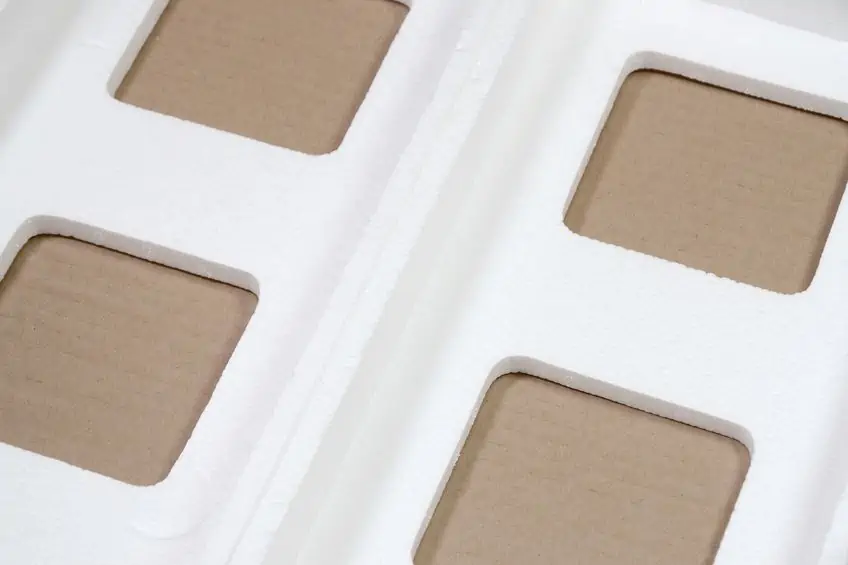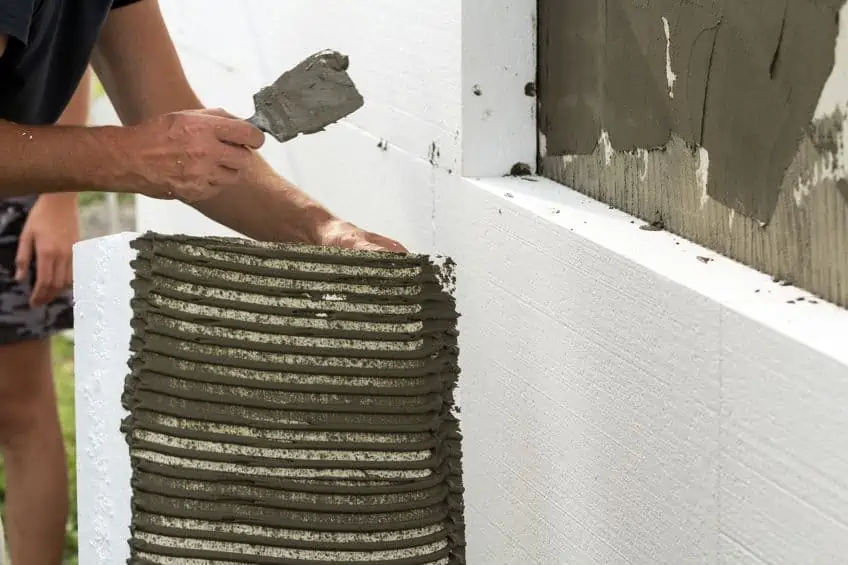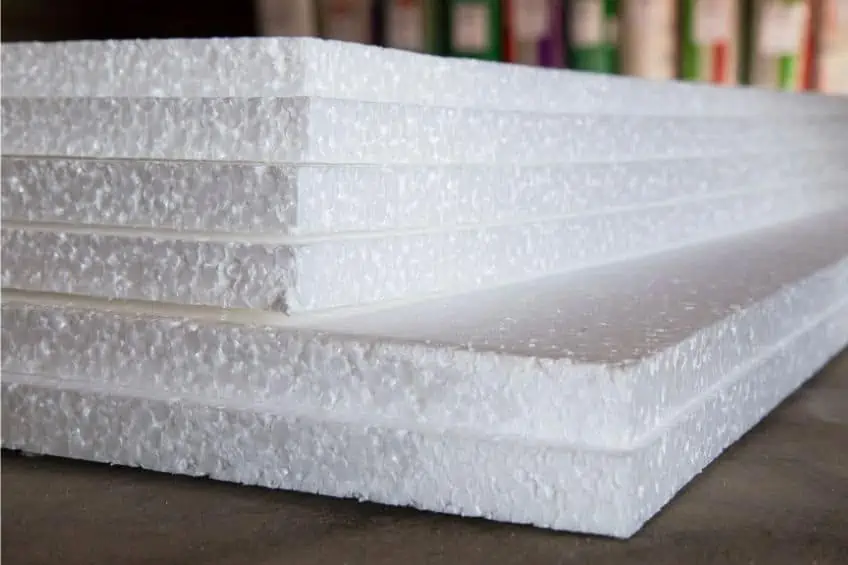Best Glue for Styrofoam – How to Use Polystyrene Adhesives
This post may contain affiliate links. We may earn a small commission from purchases made through them, at no additional cost to you.
Imagine that your youngest child had this amazing idea for a craft project at school. They begin to build away, only for them to end up in tears because their Styrofoam has melted in the glue. Styrofoam is a special material and you cannot simply use any old glue. In this article, we break down the fundamentals of choosing the right glue for your Styrofoam project, give you our top recommendations, and lead you through the process of how to glue Styrofoam with no fuss.
Table of Contents
What Is Styrofoam?
The history of Styrofoam begins in 1839 with Edward Simon who was the pioneer of this amazing material. The year 1950 saw a rise in the use of Styrofoam, in both commercial and industrial use. Polymerization is the process that links the chemical bonds of Styrene, a liquid, together to form solid foam. Styrofoam is polystyrene that has been expanded.

In general, polystyrene is used to insulate buildings, and it is also commonly used to create takeaway food containers. There is a reason why this material is so popular and widely used amongst the globe’s industries. It is not only extremely versatile but also so easy to use. Polystyrene and Styrofoam have several great advantages, including:
- Great money value
- Not as prone to mineral acids
- Not as prone to aqueous alkalis
- Not very heavy
- Is capable of being pigmented
- Processes easily
- Liquids and gases penetrate easily
One of the major downsides to Styrofoam is that it is not biodegradable, it simply disintegrates into smaller and smaller bits of plastic. Styrofoam is also particularly sensitive to solvents and gasoline, so you cannot use any old glue in place of a specialized Styrofoam adhesive.

Choosing the Right Styrofoam Adhesive
Depending on your project, you may be gluing one piece of Styrofoam to another, or you may be needing a polystyrene adhesive that is suitable for other surfaces too. There are two broad types of surface that you may encounter, and they are outlined in the table below.
| Non-absorbent Surface | · Metals · Glass · Plastic coated multi-purpose tiles · Ceramic tiles |
| Absorbent Surface | · Wood · Stone · Plaster · Concrete |
Many of the glues that you would use for some of these other materials are solvent-based, and these are not suitable for polystyrene.
Solvent-based glues can also leave unsightly marks on your surfaces. So, if you cannot use solvent-based glues for polystyrene, what is the best polystyrene adhesive out there?
An Overview of the Different Styrofoam Adhesives
Luckily, when it comes to finding a glue that is suitable for polystyrene and Styrofoam, there are several great options. In the table below, you will find a brief overview of the different polystyrene adhesives available on the market.
| Acrylic Adhesive | Acrylic adhesives are most suited to non-absorbent surfaces. It is sensitive to UV lighting and comes in a singular or a duo component variant. The singular component acrylic adhesive is sufficient. Before the actual bondage, a flash-off phase is needed |
| As with Acrylic Adhesive, Epoxy also has a singular component option or a duo-component option. Luckily, no flash-off phase is needed. | |
| Polyurethane Foam | This is a combination style adhesive. This means it can bond with non-absorbent as well as absorbent surfaces – you will find the right one by reading the label. It works with bonding various materials, not just sticking polystyrene to polystyrene. |
| Water-based Dispersion Adhesive | With this adhesive, a flash-off phase is needed in case the curing is impacted. It is designed for non-absorbent surfaces. Work well for a large surface area because it comes in a spray canister. |
Polystyrene is sensitive to heat, therefore, a word for the wise – avoid using a hot glue gun.
Our Top Three Styrofoam Adhesive Recommendations
When it comes to choosing the right adhesive for Styrofoam, it can be a difficult choice to make. There are many products on the market, but not all are created equally. Here, we have created a list of our top three recommendations for Styrofoam glue, that are guaranteed to give you a quality finish.

The Best Polystyrene Adhesive for Small Areas: UHU POR Adhesive
If the surface area you are trying to bond is smaller than most, UHU Por Adhesive is your best bet. It is nice and affordable and can be used for various materials. Another advantage is that once this product dries it can bend without breaking, which means it’s good with flexible materials. There are minimal limitations with UHU Por Adhesive.
- Versatile adhesive suitable for polystyrene, wood, glass, and leather
- Once dry, the glue is clear and unnoticeable
- The small cannula attached makes application seamless
PROS
- Can work with other materials, not just polystyrene
- Easy to distribute from the small cannula attached
- Fast-drawing contact adhesive
- It is solvent-free
- Once it dries it is transparent and flexible
CONS
- May not be appropriate for very tiny areas
- PE and PP are not suited for this adhesive
Regardless of the two minor disadvantages, UHU Po Adhesive is the best glue for polystyrene
The Best Polystyrene Adhesive for Large Surfaces: LOCTITE Styrofoam Adhesive
This Styrofoam adhesive is an excellent option for any polystyrene project. If you are looking to bond a larger piece of polystyrene to either another polystyrene surface or another material, then this is a great choice. You are not required to be an experienced gluer because this product is much simpler to apply than expected. There are far more advantages to this glue than disadvantages, making it a winning choice.
- A long-lasting adhesive that dries clear and does not become tatty
- Superior strength makes it perfect for use in hard-to-reach areas
- Versatile adhesive is suitable for many surfaces including polystyrene
PROS
- It is not prone to wearing out and looking tatty
- Designed for surfaces that are non-absorbent
- Suitable for more than polystyrene bonding
- Great for bonding hard-to-reach areas because of the adhesive’s strength
CONS
- It can be quite a messy job because of the viscosity of this Styrofoam glue
Never mind the mess, crafting is almost always a messy situation, no matter the materials used.
The Easiest Polystyrene Adhesive to Use: 3M Spray Adhesive
This adhesive spray is particularly easy to use because of the nozzle. It promises permanency, durability, and versatility. The 3M spray adhesive is suitable for a range of other surfaces, not only polystyrene. The spray can is perfectly designed to quickly cover larger areas without leaving any streaks.
- A clear, lightweight aerosol adhesive perfect for polystyrene surfaces
- This polystyrene adhesive dries clear for neat finishes
- Recommended as an adhesive for positioning applications
PROS
- Not sensitive to mechanical stress
- It is applied in a thin layer leaving no streaks
- No silicone
- Comes in various sizes for various jobs
CONS
- Gives off quite an intense odor which can be irritating
- Good air-flow is needed or a respiratory mask
- Fairly pricey
How to Glue Styrofoam Boards
Once you have selected the most suitable polystyrene glue for your project, there is the matter of applying it. You do not need to sieve through the web any longer because we have the ultimate how-to guide below.

Materials Needed
Before you start your work, to prevent any delays make sure to get all the equipment and materials you will need before you start. For premium results when using the best glue for Styrofoam boards, you should have the following supplies:
- Craft knife or a sharp knife
- PU foam
- Spatula with serrated edge
- Polystyrene pieces
- Protected work surface which can get messy
Step 1: Preparing Your Styrofoam
Before you begin adding glue to your Styrofoam, you need to have all your pieces cut out and ready. Trace the strips and plates of the polystyrene and cut them out neatly, this should be drawn out on a template before you cut them out which will save you time. 
If you are gluing your polystyrene to a wall or another surface, it is essential that you ensure that this surface is flat. If the surface is not completely smooth, your polystyrene may break. We would suggest sanding your surface, if possible.
Once you have sanded that down, you must clean up the surface to collect the residual dust particles left over. After that has dried, you can begin to add the adhesive – it will properly stick because the surface is smooth, clean, and dry.
Step 2: Applying the Styrofoam Adhesive
The process for how to glue Styrofoam is not that complicated. Firstly, place the Styrofoam board up-side-down, with the surface you want to glue facing you. Using a serrated spatula, smear the Styrofoam glue to this side. Make sure you apply a thin layer at first, you can always add a bit more if you need to.

Ensuring that the glue is evenly distributed, you must also make sure to leave a border space around the edge of the board – in the case of swelling.
What is important to note is that you must never leave gaps within the layer of glue as this can cause the Styrofoam board to swell in certain areas.
Once you have covered the entire Styrofoam board, you can stick it to the wall, or your chosen surface. We always extend caution when sticking your Styrofoam to the desired surface, as the polystyrene is fragile and brittle.
Step 3: Curing Your Polystyrene Adhesive
Most Styrofoam adhesives will dry pretty fast, which means you do not have to wait long for the curing phase to be complete. A five-minute wait is the most of what you should expect.
The fast curing time is a great benefit but it does require swift hands to get the glue and board applied in a timely fashion.
Step 4: Filling the Gaps with PU Foam
Often there is the case of larger gaps and smaller gaps that need to be filled, the answer for this is PU foam. You should lookout for a solvent-free option and apply it gently into the gaps. Make sure to remove and PU foam bits that have hardened with a sharp knife or blade.

If you’ve noticed the gapped effect that the edges of the foam board possess you can fill that in with PU foam. This has a curing period of 24 hours after which you can apply polystyrene strips that fit.
Hopefully you now know how to choose the right glue for styrofoam and how to use your top polystyrene adhesives.
Frequently Asked Questions
Which Is the Best Glue for Styrofoam?
If you are working with a non-absorbent surface, then the best adhesive would be a resin adhesive, an epoxy adhesive, an acrylic adhesive, or a dispersion. If You are working with an absorbent surface, then the best glue for your project would be a PU foam adhesive.
How can I Glue Styrofoam on Styrofoam?
If you are looking for long-lasting and water-resistant polystyrene glue, you should avoid using anything besides the recommended adhesives we have mentioned above. Make sure you are using the appropriate glue for the right surface. Apply the adhesive to the underside of the foam board. Work quickly, your next step is to stick it to the wall.











